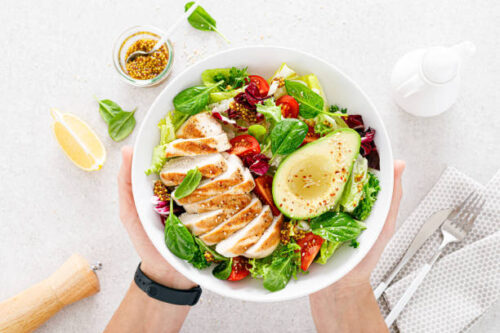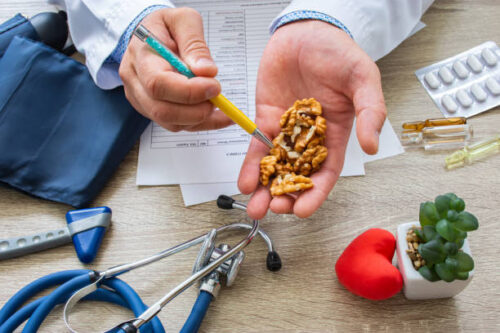Layer cakes have always been a favorite of mine. There are many creative options, from choosing the flavors to decorating them, so there is plenty of scope for expression and creativity. My cake decorating style has changed as I have become a better baker. It is now simple, elegant, and chic.
Naked cakes are my favorite lately. The naked cake decorating style leaves the outside of the cake unadorned by using very thin frosting layers. You won’t notice the frosting as the cake layers are filled with it. Naked cakes are my favorite because they are easy to make and can be adapted easily by bakers who don’t have the time or patience for more complex cake decorating.
Step 1: Make the cake
You can use any recipe for naked cakes. You can use any cake recipe, yellow, vanilla or chocolate cakes. All you need is a cake that’s sturdy enough to stack.
Your choice of cake will determine the final aesthetic, as it will be visible. For example, a chocolate cake will be a striking contrast with white icing. You can also color the layers with natural food dye to add your creativity.
These are two classic recipes that you can use as your base:
- Golden Vanilla Cake
- Chocolate Cake
The lemon cake was used in the below example. It was paired with blueberry filling to make a summer-inspired dessert.
You can use any size cake. Your naked cake can be made in 8″ or 9″ round pans – whatever size you prefer. You can also vary the number of layers. It is easy to make two, three, or four layers. If you have more than three layers, make sure to secure them with a cake dowel.
Step 2: Make the frosting
Naked cakes are easy to make for everyone, regardless of their skill level. They don’t need complex buttercreams such as Swiss and Italian Meringue. I use either simple vanilla buttercream frosting oder stabilized whipped cream for decorating naked cakes. You can use any frosting that is smooth, spreadable and holds its form. This Ermine Ice Cream is a great choice.
Whipping cream is not as stable as other frostings. Make sure to refrigerate your cake immediately after assembly. (Instant ClearJel may also stabilize whipped cream. For more information, see How do you whip cream.
Step 3: Filling the form (optional).
Although it is not necessary, adding a filling to a cake adds flavor. While I prefer berry fillings, curds are also good. Blueberry compote was used to fill the naked cake. You can use frosting instead if you don’t need a different filling.
After you have prepared the layers, frosting, filling and frosting of your cake, it’s time to assemble your cake and decorate it.
Step 4: Assemble the layer cake
You’ll need:
- Three layers of cake, or two to four layers.
- One batch of frosting
- Filling: About 1 cup (use less filling to make two layers and more for four).
- Revolving cake stand
- Offset spatula
- Cake board (also known by the term cake round)
- Pastry bag with a large round tip
- Bench scraper
- Optional decorations such as fresh flowers and berries
Begin by leveling the cake layers. You can use a cake leveler to remove the tops of the layers. You can also use cake strips to smoothen the tops of your cake after baking. As described in this how do you bake cake evenly post.
Place one layer of the cake on a cake board. Place the cake board on top of a revolving stand.
Half a cup frosting should be put into a pastry bag. A 1″ border should be pounded around the cake. This will act as a dam to hold your filling in its place. Place about 1/2 cup of the filling in the center well. Use an offset spatula to smoothen the mixture. Spread frosting on top of the cake layer if you don’t use filling.
Add about 1/2 cup buttercream to the top of the filling and mix well. You don’t need to make it perfect.
Layer another cake, and then repeat the steps above until you have reached the final cake layer.
Buttercream – Crumb coat all cakes with a thin layer. Because naked cakes are all about the simplicity of the frosting, you will want a thin layer of frosting. Make sure that the frosting is not too thick. Use the offset spatula to smoothen as much as possible.
Next, add a thin layer of buttercream. You can smoothen the frosting with a large offset or angled spatula. Then rotate the cake by using the revolving stand. To smoothen the frosting, you can also use a bench Scraper.
It is better to begin with more frosting than what you actually need. As you add more frosting, it will thin the frosting. It’s better to have more frosting than you need to correct any mistakes. Continue smoothing out frosting until you are satisfied with your design. Your final layer may be thin enough to allow a little bit of cake through or thick enough that the entire cake can be seen. You can use your imagination here!
Don’t worry about getting a perfect finish. Rustic naked cakes are beautiful because they can be imperfectly beautiful.
Step 5: Finishing touches
The best thing about naked cakes? They are easy to decorate. Finish your lightly frosted cake by topping it with fresh berries and a dusting of confectioners sugar. You can finish a naked cake with chocolate drippings, chocolate drippings, or simple piped Buttercream borders.







